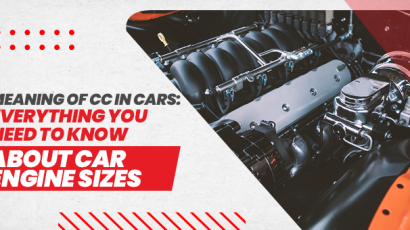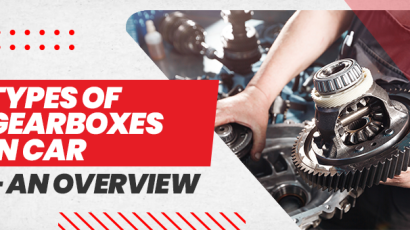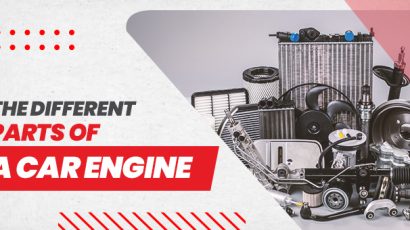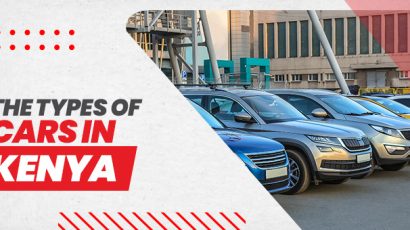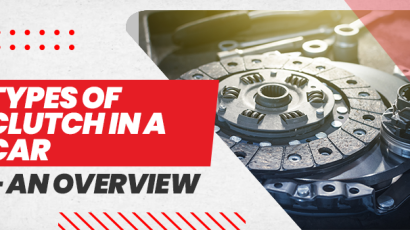
Car manufacturers utilize distinct layouts of cylinders for certain types of car engines to ensure that the engine will fit under the bonnet or increase engine power. The basis of engine classification mainly revolves around the following:
1. Fuel Consumption
2. The Number Of Strokes
3. The Operation Cycle
4. The Type Of Ignition
5. The Arrangement Of Cylinders
6. The Number Of Cylinders
7. The Types Of Cooling
8. The Performance Of Valves
Engines are star players in numerous areas, including marine industries, automotive industries, aircraft industries, and so on. In this article, we will understand the various types of car engines.
How Do Car Engines Function?
The engine is one of the most important parts of an automobile. They create the power to operate a car when the air mixes up with fuel. Later, this combination reaches the cylinder of an engine. However, this combination of air and fuel gets flamed up by a spark, resulting in a tiny explosion.
A piston constantly slides up and down in every cylinder because of these explosions. As a result of this mechanism, it transmits force to the wheels through the gearbox. Generally, two factors affect the engine’s operating power. One is the engine’s size, and the other is the number of cylinders.
Various Types Of Car Engine
Here are the various types of car engine used in different types of vehicles.
In-line Engines
In-line engines are the most basic type of engine in a car. They are the most widely used engines and are the design choice of many car engine manufacturers who work with the combustion types of a car’s engine.
The cylinder arrangement is side-by-side and in an upright position at right angles to the car. Automobile professionals refer to this alignment as an in-line engine layout. Such types of car engines are present in small vehicles or usually in hatchbacks. They help maintain the smooth functioning of the cars.
Straight Engines
The straight engines are similar to an in-line engines. However, the cylinders are in a parallel position with the car from the front to the back. The straight-engine layout is common in premium cars such as BMWs. Some people also refer to these engines as straight engines.
Mostly, in-line and straight engines are the most common engine of a car because of their inexpensive and simple manufacturing. These engines also have a simple installation process. However, consecutive engines have more cylinders and, therefore, more power than an in-line engine.
Flat Engines
Flat engines’ layout typically revolves around the cylinders being mounted horizontally, having 2 rows facing toward the outer side. Also, this type of car engine is known as a boxer engine. The movement of its piston generally mimics the boxer punching gloves prior to a fight.
Flat engines are not as common as in-line or straight engines. However, one of the biggest manufacturers of such types of engines is Porche. These engines are popular for allowing a low center of gravity which causes improved handling of cars.
Moreover, concerning their large surface area, these engines allow the cylinders to air cool. Compared to in-line and straight engines, boxer engines are quite a high cost to manufacture. Several automobile manufacturers do not consider these engines great due to their larger size.
V Engines
V engines have a unique arrangement of their cylinders, giving them the name of V engines. The shape resembles that of the alphabet ‘V’ if viewed from the front. The cylinder’s sequence sets in two rows at a 60-90 degrees angle that aligns to a common crankshaft forming a “V” shape. Each group of cylinders making up one side of the ‘V’ is called a bank of cylinders.
These rows connect at the base of the V shape with the help of a crankshaft. Because of the ability to compress many cylinders in a V shape arrangement, this engine of the car is available in premium vehicles and supercars.
VR and W Engines
The VR engines were invented by none other than the famous Volkswagen Group. These engines’ basis follows a similar principle as the V engines. However, the overall distance between both rows of cylinders is comparatively narrower than the V engines.
The space is so narrow that it compresses the cylinders together as a single block. On the other hand, a W engine is responsible for combining these VR engines’ banks at the base. Shockingly, VR engines are now considered quite rare, whereas, on the other hand, the W engines are in cars, including Bentley Mulsanne.
Rotary Engines
Rotary engines are unique engines mainly because they lack pistons. Rather, they possess a triangular-shaped rotor that rotates inside a large cylinder. Unfortunately, these engines are not being used now. However, they were widely used previously in sports cars such as the RX8 by Mazda.
These unique engines are highly-regarded by car enthusiasts due to their deliverance of smooth power. These engines cost an arm and a leg, which is why they are no longer used.
Air Intake Systems Of Car Engines
Engines require to force air inside to generate more power. Furthermore, engines possess air intake systems. With the help of such systems, the smaller engines can generate almost the same amount of power as those caused by the larger engines.
Moreover, these air intake systems also increase the engine’s efficiency. Mostly, the engines make use of either supercharging or turbocharging.
Turbocharging
A Turbocharger is a tiny turbine that is connected to the engine. Exhaust fumes are enforced through the turbo and rotate the turbine, thus squeezing the air entering the engine. The compressed air is mainly comprised of Oxygen. As a result, it creates a big explosion when it is forced to enter the engine, generating more power.
Initially, turbochargers were used mainly on sports cars so that they were able to generate more power. However, now these turbos have successfully made their way to smaller cars to enhance their efficiency.
Supercharging
A supercharger works similarly to a turbocharger. The superchargers also squeeze the engine’s air to create a bigger explosion. However, the major difference between these air intake systems is that a belt from the engine fuels the superchargers.
The superchargers are quite less commonly used as compared to the turbochargers. As a matter of fact, they are currently only being used by luxury cars, for instance, the Range Rover.
Final Thoughts
The outer looks of a car are all about beauty, whereas what’s on the inner side is more important. Because the interior of any car will direct us to what the car is capable of. However, unfortunately, it is quite rare for people to focus on the most influential part, the engine of a car.
At the same time, the main priority of any car enthusiast is always the engine. But sadly, for a commoner, it is most probably the last. A lot of people are even unaware of the major details regarding an engine.






